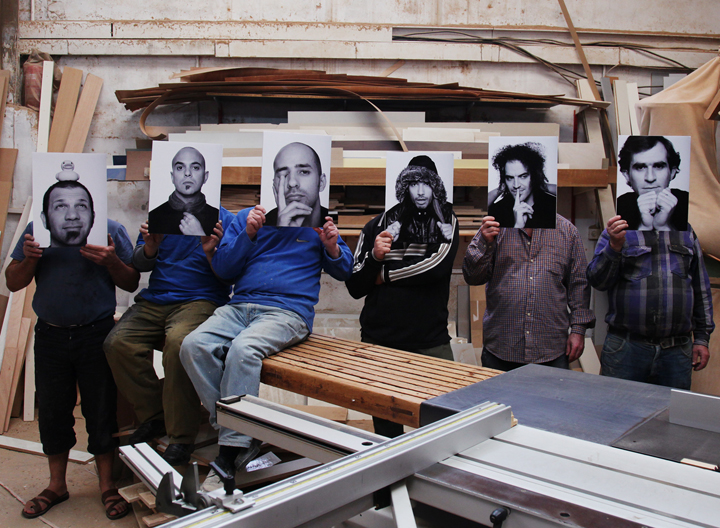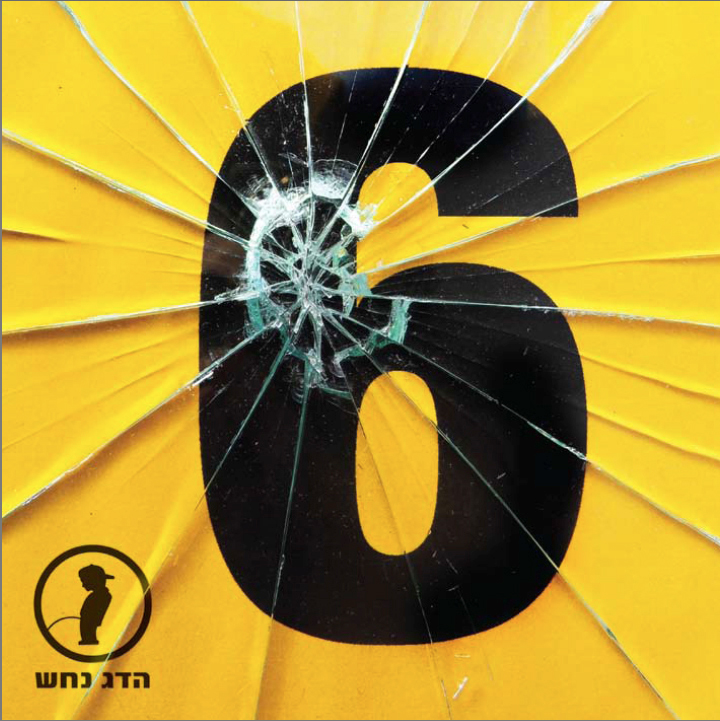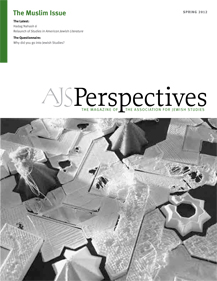
Earlier that year, the Israeli hip-hop band released 6, its fifth studio album, bearing a relentless message of social, economic, and political protest. Some of the themes are familiar, among them war ("War"), the increasing violence within Israeli society ("'od 'ah ehad"), religious fanaticism ("Little Man"), and the plight of foreign workers ("ma'arbolet shel hol"). Others, like zeh lo' maspik's lament against the vacuity of success, less so. Perhaps the most dramatic protest is Hadag Nahash's decision to begin recording in English. To be sure, Anglophone success is much more lucrative than one limited to a Hebrew speaking audience—just ask Isaac Bashevis Singer and S. Y. Agnon—so the band has solid financial reasons for writing in English. Still, given the dark tone and relentless criticism of much of the album, it is hard not to hear the English songs as a sign of growing despair, artistic and perhaps more, of seeing—to say nothing of effecting—meaningful change in Israel.

Fortunately, Hadag Nahash remain a formidable force in their native tongue, and 6 contains some of their finest songs. Musically, the band hews close to its established mix of laid-back rap, dance floor rousers, and hiphop laced with big, infectious brass sections. An exception is the acoustic "'od 'ah 'ehad" ("Another Brother"), whose simple (some would say: simplistic) lyrics are paired with a simple melody to produce a poignant protest against the senseless death of young Israeli men and the rhetorical and at times physical violence that follows. Anyone familiar with the vapid landscape of American top forty (e.g., parents to teens) will be struck by the fact that the song hit number one on both the Reshet Gimmel and Galgalatz countdowns.
The remarkable "ba-salon shel salomon" ("In Solomon's Living Room") provides the listener a glimpse of the raunchy, hip-hop boys-will-be-boys camaraderie that fuels the band's creative process as they sit in Solomon's (Shlomi Alon, the band's saxophonist and flautist) living room, "going back to the classics to write our verses." Food, alcohol, dirty jokes, and crashing laptops fuse in a lovingly wrought portrait of friends and musical partners savoring their time together.
To my mind, the album contains two of Hadag Nahash's strongest songs. "Ani ma'amin" ("I Believe") offers a series of unapologetically leftist credos about Israel's failures as a negotiating partner, the dire need to invest in public education and cultural activities, rampant racism and economic inequality. The singer, Sha'anan Street, then shifts gears and, adopting an ironic pose, describes the well-intentioned actions of a political activist organizing demonstrations, working with nonprofits, raising awareness—in short, the very activities that have characterized Hadag Nahash since their early days. But, at least in the song, it is all for naught. Nobody cares and so "I wither away, drop off, drawing away from everyone, not eating and not drinking . . . " This tale of irreparable social decay and individual impotence is set to some of the band's funkiest music, opening with a blaring trumpet—part Earth, Wind, and Fire tribute, part biblical declaration of war—that shifts into a richly textured, syncopated rap. As though the band were saying: the situation is indeed hopeless—all that's left is to dance.
The crowning achievement of 6 is, to my mind, "shir nehama" ("A Song of Consolation"). Thematically, the song is of a piece with the album's motifs of protest and despair."My taxes go toward the purchase of weapons, and I see (the world) through them; my children pull the trigger, and I'm so very proud . . ." Street shouts with biting sarcasm, even as he lays some of blame at his own feet since even though he is lied to and deceived "like an innocent lamb, still I believe (or: still I have faith)." The confluence of criticism and helplessness leads—as with "'ani ma'amin" and "zeh lo' maspik"—to a self-directed critique, here in the derogatory characterization of the band's musical enterprise. Like other protest songs that thematize the powerlessness of the song to effect the desired change (e.g., Shlomo Gronich's "shirim peshutim"), Hadag Nahash pull back from the implicit claim that their message can make a difference, seeking solace in home cooking, backyard barbecues, and a bottle of arak.
And their music? They "sing in order not to see that there's nothing to sing for; sing another song of consolation." At the same time, the song epitomizes the best traits of popular Israeli culture. The lyrics layer elevated and colloquial Hebrew, and the irrepressible melody is a tapestry of sources and influences. Opening with an oud riff, "shir nehama" is based on an Arab musical scale though it is performed on typically western instruments (electric guitars, a drum battery, electric bass). The musical synthesis is personified in the guest guitar soloist, Yehuda Keisar, a seminal figure in the Mizrahi music scene. Keisar is considered the father of the Mizrahi electric guitar, a style he developed while playing with many of the luminaries of Mizrahi (sometimes called "Mediterranean") music, most famously Zohar Argov, whose first album he produced (Elinor, the best-selling Hebrew album of all time). His inclusion in Hadag Nahash's hip-hop, is a testament to the band's desire to break down the barriers that have long defined Israeli music.
6 is a grim album that reflects Hadag Nahash's growing despair with ha-matzav, the hypostasized Israeli "situation," and their ability to change it. Guy Mar's "zeh lo' maspik" ("It's Not Enough"), offers a long list of "achievements" (from HD DVR's to Facebook friends) all of which predictably turn out to be "not enough," a list that culminates in another bout of musical self-critique: "I've got a band—it's not enough; we conquered the charts—it's not enough . . . this song is nice—but it's not enough." Faced with the band's increasing tendency to question the ultimate meaning of their music, at least one fan would like to temper the pessimism. Yes, politically, socially, and economically 6 may not be enough, but it shows that Hadag Nahash continues to be a fresh and thoughtful voice in Israeli music, with a groove second to none. And that's no small thing.

